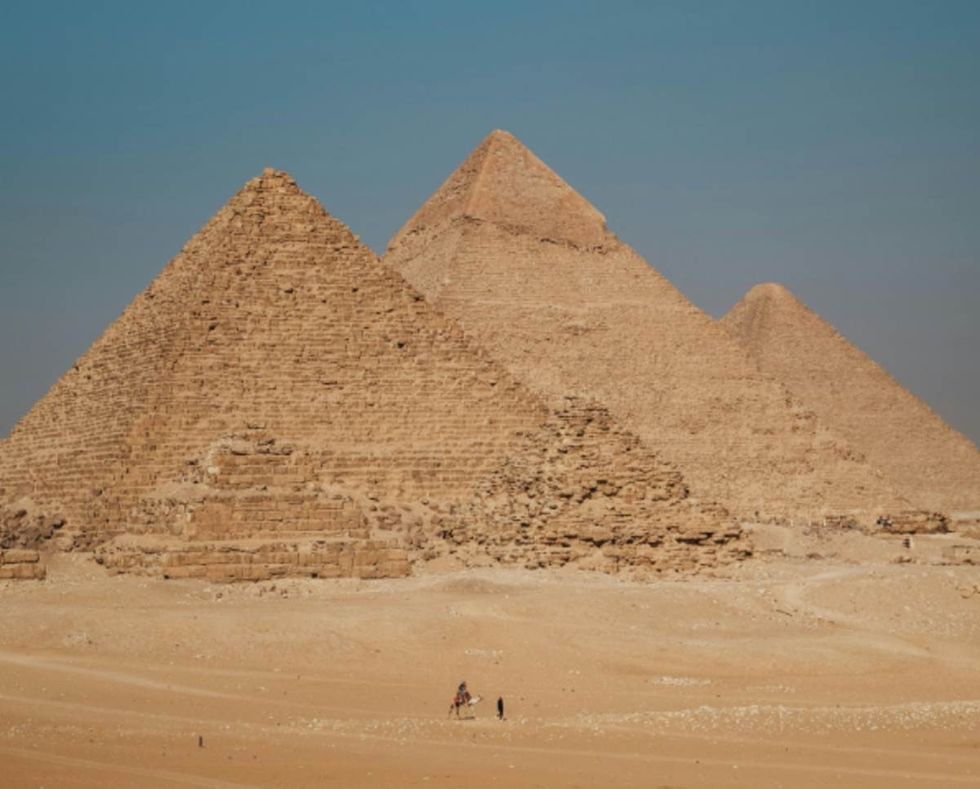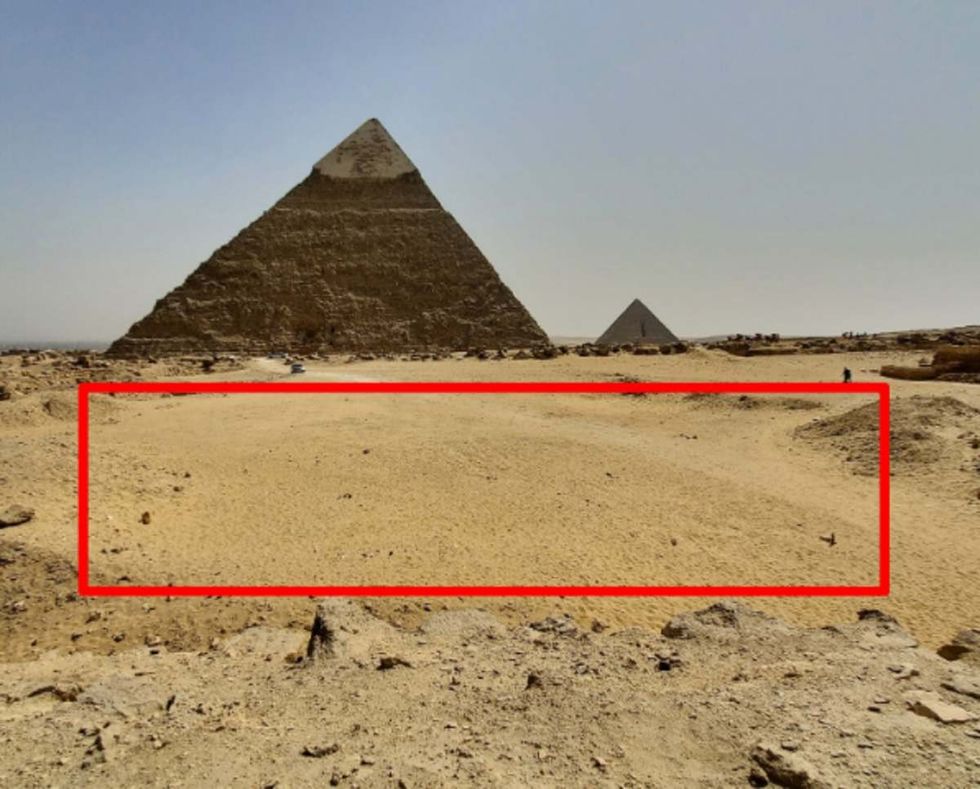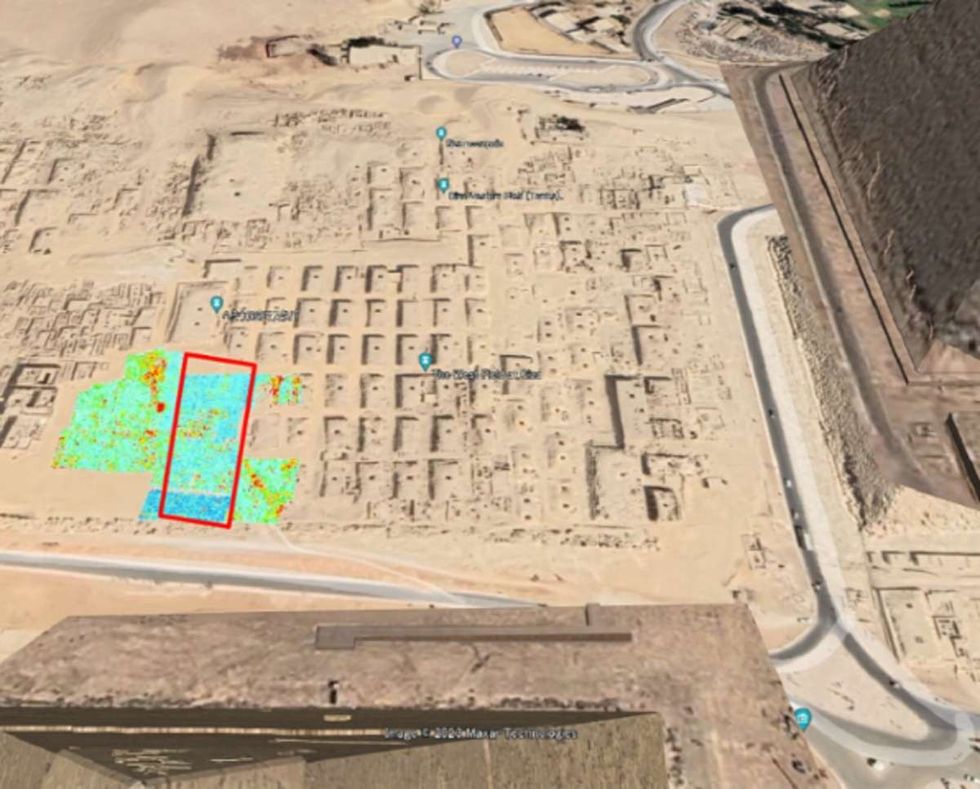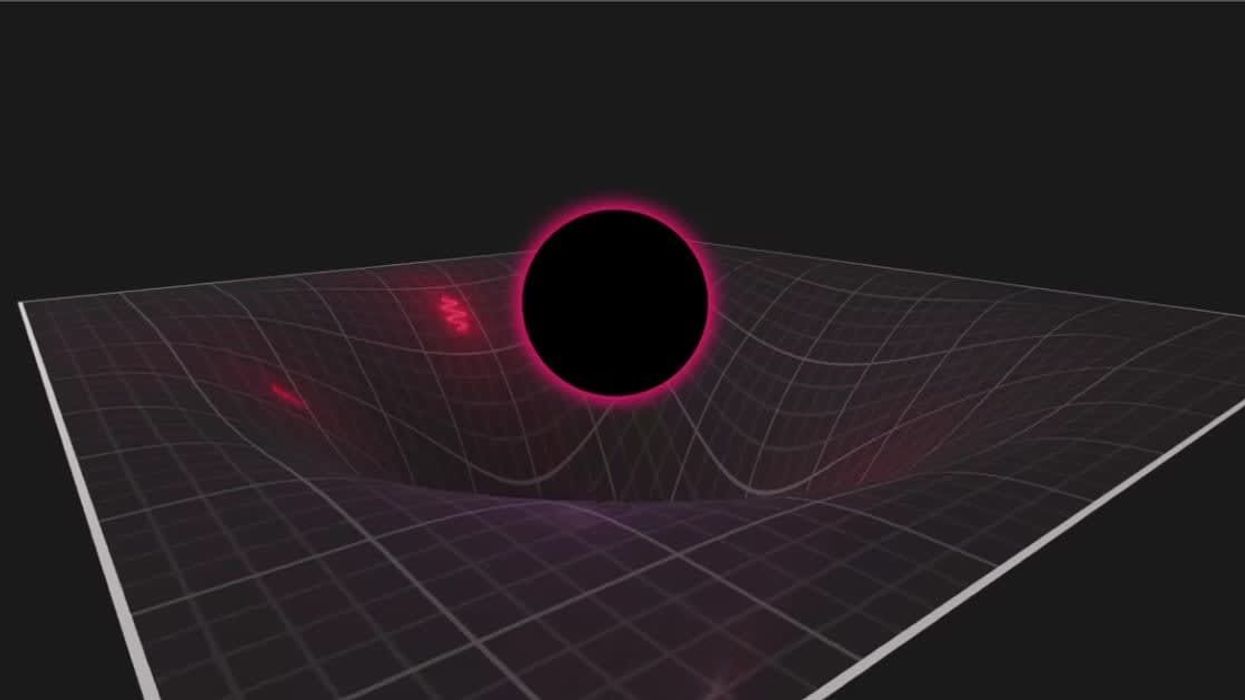Archaeological mysteries are always intriguing, often revealing extraordinary discoveries. The Pyramids of Giza, among Egypt's most iconic landmarks, continue to unveil historical treasures from ancient times. Recently, a team of archaeologists discovered a mysterious "anomaly" near the pyramids, sparking curiosity and excitement. Their detailed findings were published in The Archaeological Prospection.

The discovery occurred in the western section of the pyramids, a region commonly recognized as the graveyard area, according to ScienceAlert. Researchers highlighted that the Western Cemetery, spanning roughly 560 meters east to west and 370 meters north to south, is filled with mastabas of various sizes. However, they pointed out a central area with no visible structures, prompting them to question what lies beneath. "No underground investigations have previously been carried out," they noted.
Using shallow geophysical exploration methods like "Ground-penetrating radar (GPR), electrical resistivity surveys, and magnetic surveys," the researchers investigated the entire Western Cemetery. There, they came across an "L-shaped" structure buried and concealed deep in the ground. It was further mentioned that the structure below the L-shaped space showed high electrical resistance when tracked with the equipment.

“Below this structure, ERT reveals a highly electrically resistive anomaly. Electrically resistive material in a dune can be a mixture of sand and gravel, including sparse spacing or air voids within it. Neither GPR nor ERT could identify the properties of the anomaly,” the study read. The suspense of the contents of the structure have researchers titling the structure an “anomaly.” “We believe we found an anomaly: a combination of a shallow structure connected to a deeper structure. The shallow structure, which is L-shaped was clearly imaged by GPR. It seems to have been filled with sand, which means it was backfilled after it was constructed. It may have been an entrance to the deeper structure,” they explained.

Though researchers are intrigued by its presence, they’re unsure what it may be just yet. The dimensions for the same span are 10 by 15 meters wide and 0.5 to 2 meters deep. There is also the possibility of a similar-sized structure below the recent finding. The area around which the structure was found contains remains of royals and officials and was used as a graveyard by the Egyptians. The graves were rectangular structures with stones called “mastabas.” The study defined these as, “A mastaba is a type of tomb, which has a flat roof and rectangular structure on the ground surface, constructed out of limestone or mud bricks. It has a vertical shaft connected to a subsurface chamber.”
The anomaly was found in one of the Egyptian prince’s tombs. “The survey area is south of mastaba G4000, which is known as the tomb of Prince Hemiunu,” the study read. The area wasn’t explored much by archaeologists since it was a burial ground which explains the finding coming to light only after 4000 years of remaining undisturbed. The researchers aim to figure out what the “anomaly” is without having to dig through the burial grounds and use just their advanced technology. In conclusion, the study revealed, “We believe that the continuity of the shallow structure and the deep large structure is important. From the survey results, we cannot determine the material causing the anomaly, but it may be a large subsurface archaeological structure.”
Editor's note: This article was originally published on July 12, 2024. It has since been updated.
















 Pexels | Photo by Andrea Piacquadio
Pexels | Photo by Andrea Piacquadio
 An Atlantic grey seal looking at the camera underwater. (Representative Image Source: Getty Images | Mark Chivers)
An Atlantic grey seal looking at the camera underwater. (Representative Image Source: Getty Images | Mark Chivers) A grey seal swims up to a scuba diver. (Representative Image Source: Getty Images | Huw Thomas)
A grey seal swims up to a scuba diver. (Representative Image Source: Getty Images | Huw Thomas) A Grey seal nibbles at the hood of a scuba diver. (Representative Image Source: Getty Images | Bernard Radvaner)
A Grey seal nibbles at the hood of a scuba diver. (Representative Image Source: Getty Images | Bernard Radvaner)
 Image Source: Seth Rogen and Lauren Miller Rogen co-host the HFC Austin Brain Health Dinner on September 30, 2023, in Austin, Texas. (Photo by Rick Kern/Getty Images for Hilarity for Charity)
Image Source: Seth Rogen and Lauren Miller Rogen co-host the HFC Austin Brain Health Dinner on September 30, 2023, in Austin, Texas. (Photo by Rick Kern/Getty Images for Hilarity for Charity) Image Source: Seth Rogen and Lauren Miller Rogen attend the 95th Annual Academy Awards on March 12, 2023 in Hollywood, California. (Photo by Arturo Holmes/Getty Images )
Image Source: Seth Rogen and Lauren Miller Rogen attend the 95th Annual Academy Awards on March 12, 2023 in Hollywood, California. (Photo by Arturo Holmes/Getty Images ) Image Source: YouTube |
Image Source: YouTube |  Image Source: YouTube |
Image Source: YouTube | 
 Image Source: In this handout photo provided by the National Science Foundation, the Event Horizon Telescope captures a black hole at the center of galaxy M87 in an image released on April 10, 2019. (National Science Foundation via Getty Images)
Image Source: In this handout photo provided by the National Science Foundation, the Event Horizon Telescope captures a black hole at the center of galaxy M87 in an image released on April 10, 2019. (National Science Foundation via Getty Images)
 Representational Image Source: Pexels I Photo by Nataliya Vaitkevich
Representational Image Source: Pexels I Photo by Nataliya Vaitkevich Representative Image Source: Pexels | Kampus Production
Representative Image Source: Pexels | Kampus Production
 Image Source: Destroyed vehicles lie near the rubble after the earthquake and tsunami devastated the area on March 16, 2011, in Minamisanriku, Japan. The 9.0 magnitude strong earthquake struck offshore on March 11 at 2:46 pm local time, triggering a tsunami wave of up to ten meters which engulfed large parts of north-eastern Japan. (Photo by Chris McGrath/Getty Images)
Image Source: Destroyed vehicles lie near the rubble after the earthquake and tsunami devastated the area on March 16, 2011, in Minamisanriku, Japan. The 9.0 magnitude strong earthquake struck offshore on March 11 at 2:46 pm local time, triggering a tsunami wave of up to ten meters which engulfed large parts of north-eastern Japan. (Photo by Chris McGrath/Getty Images) Representative Image Source: Pexels | Pixabay
Representative Image Source: Pexels | Pixabay Representative Image Source: Pexels | Stuart Pritchards
Representative Image Source: Pexels | Stuart Pritchards
 Image Source: Musician Keith Urban and actress Nicole Kidman arrive at the 2009 American Music Awards at Nokia Theatre L.A. Live on November 22, 2009 in Los Angeles, California. (Photo by Jeffrey Mayer/WireImage)
Image Source: Musician Keith Urban and actress Nicole Kidman arrive at the 2009 American Music Awards at Nokia Theatre L.A. Live on November 22, 2009 in Los Angeles, California. (Photo by Jeffrey Mayer/WireImage) Image Source: Keith Urban and Nicole Kidman attend The 2024 Met Gala on May 06, 2024 in New York City. (Photo by John Shearer/WireImage)
Image Source: Keith Urban and Nicole Kidman attend The 2024 Met Gala on May 06, 2024 in New York City. (Photo by John Shearer/WireImage) Image Source: Musician Keith Urban and actress Nicole Kidman arrive at the Oscars on February 24, 2013 in Hollywood, California. (Photo by Jeff Vespa/WireImage)
Image Source: Musician Keith Urban and actress Nicole Kidman arrive at the Oscars on February 24, 2013 in Hollywood, California. (Photo by Jeff Vespa/WireImage)
 Representative Image Source: Pexels | August de Richelieu
Representative Image Source: Pexels | August de Richelieu Representative Image Source: Pexels | August de Richelieu
Representative Image Source: Pexels | August de Richelieu Representative Image Source: Pexels | Djordje Vezilic
Representative Image Source: Pexels | Djordje Vezilic Representative Image Source: Pexels | Fauxels
Representative Image Source: Pexels | Fauxels